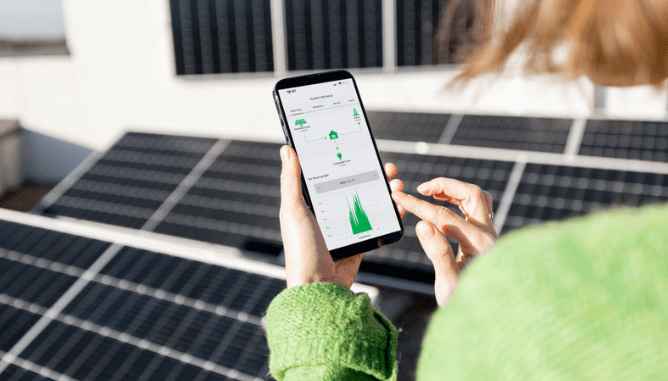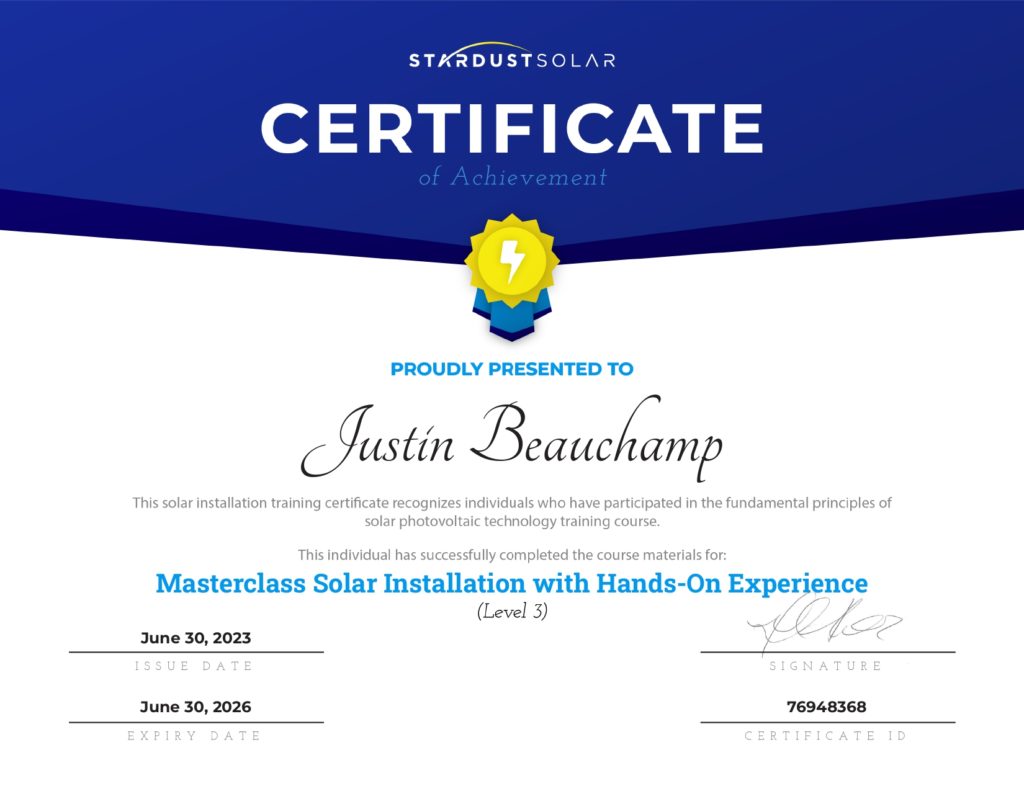Solar makes sense in Winnipeg due to its long summer days and high sunlight intensity. According to a solar PV analysis, each kilowatt of installed solar system capacity can generate an average of 6.27 kWh per day in summer, 2.84 kWh in autumn, 1.87 kWh in winter, and 5.35 kWh in spring.
While Winnipeg homeowners can switch to solar power seamlessly, residents living at apartment buildings have concerns about whether they can install solar panels, considering their location.
Good news—it’s feasible since multi-unit residential buildings have wider roof areas, which is ideal for solar panel installation Winnipeg. But first, let us understand the great potential of solar installations in Winnipeg.
Solar Power Generation in Winnipeg
Solar energy production in Winnipeg, Manitoba, is influenced by the angle at which solar panels are installed. Here are some notable facts from the Solar Calculator Canada:
- The optimal angle of solar panels for maximum annual production is 42 degrees, which yields 133,886 kWh per year.
- The 30-degree angle of solar panels makes an annual output of about 131,329 kWh.
- Solar panels at 25 degrees make energy production of approximately 128,928 kWh.
- A 20-degree angle results in 125,769 kWh.
- A 15-degree angle generates 121,850 kWh per year.
Some aspects also influence these calculations.
Winnipeg’s Solar Output
It’s not always feasible to set up solar systems at the optimal angle, but there are alternative options for determining the solar power output in Winnipeg.
A 3/12 roof pitch corresponds to about a 14-degree slope, so the result should be just below the 15-degree output. Other angles include:
- 4/12 pitch is 15-20 degrees
- 5/12 pitch is 22.6 degrees
- 6/12 pitch is 26.6 degrees
- 7/12 pitch is 30.3 degrees
For example, here’s a Solar Output report for the month of June from different angles:
| Degrees | Average Daily kWh/d | Average Monthly kWh/mo |
| 15° | 501.09 | 15032.8 |
| 25° | 493.21 | 14796.4 |
Winnipeg’s Solar Radiation
To forecast solar radiation, the angle of incidence is considered, which depends on factors such as:
- Declination
- Latitude
- Inclination
- Hour angle
The weather forecast is included because, for example, only diffuse radiation is present on cloudy days, which is much less than direct radiation. The measurement unit for solar radiation is in watts per square meter (W/m2).
Winnipeg Apartments Can Switch to Solar With These Considerations
The larger roof areas of low and mid-rise multi-unit residential buildings (MURBs) are suitable for installing solar power systems to offset the unit owners’ electricity consumption. However, several factors should be considered when installing solar panels at apartment buildings.
Building’s Compatibility
Evaluate the potential of your apartment building for a solar power system. Solar installers can help you assess your location. This involves:
Solar Access
Since shading impacts solar power system performance, it only makes sense to check your roof situation. If mostly shaded, your building may not be suitable for solar. Consult a solar company for a design assessment.
Roof Condition & Warranty
Since solar systems can last 25 years, your roof may need replacing during the system’s lifespan. If the financial return is low, the cost of removing and reinstalling the solar panels could negatively affect your ROI. The best time to install a solar power system is when your roof is new, as this minimizes costs and risk while aligning construction and warranties.
Method of Solar Panel Installation
Here are two common options for installing photovoltaic panels:
- A mounting structure securely attached to the building with penetrations through the roof
- A ballasted setup that sits on the roof surface without penetrating it (suitable for flat roof installations).
So, what’s the difference?
Roof-penetrating racking secures the solar power system to the roof with screws or bolts that go through the roof and attach to internal structures like rafters. Ballasted racking systems use weights to secure solar panels on flat roofs, which requires minimal to no roof penetrations.
System Size
Some factors determine the size of the solar power system:
- Affordability: What are the installation costs for Winnipeg homeowners?
- Roof Space: How many solar panel modules can fit on the designated roof area?
- Electricity Generation: How much electricity is needed based on consumption and utility costs?
- Net Metering: How will the solar panel system be metered?
Grid Systems
Most solar power systems installed today are grid-connected to Manitoba Hydro. These solar systems do not generate electricity during power outages, so you can add a battery backup to allow your solar power system to operate during outages.
Retrofitting the solar panels system later to include battery storage is an option once the initial installation is complete. However, these off-grid systems come with increased costs due to batteries.
Inverter Location
PV systems generate DC electricity and need an inverter to convert it into AC electricity compatible with the grid. While inverters are normally placed near the main electrical panel and utility meter, you can also install your inverters outdoors.
When planning and designing your system, consider where the inverters will be located relative to the main electrical panel.
- If indoors, up to 5-10% of generated electricity can be lost as heat, which requires ventilation to prevent overheating.
- Each PV module can have its own micro-inverter, which eliminates a single large inverter and reduces the impact of shading on your overall PV array’s performance.
Costs of Installing Solar Systems in Apartments and Its ROI
2024 is the best time to install PV systems as the costs of installing residential and commercial solar systems continue to drop yearly.
In just 2017, solar energy system costs ranged from $3,000 to $4,000 per kW of solar panel module. Each kW of solar energy can generate approximately 1,100 kWh of electricity annually, depending on climate and system design.
If the solar panel system offsets your electricity consumption at $0.12/kWh, for every $3,000 to $4,000 you invest, you can save about $130 per year on your electricity bill.
For example:
The 14.7 kW PV system at Central Park Condominium costs $43,350 plus GST (not applicable in Canadian apartments), along with an additional $754 for the electrical permit and $400 for the structural engineering analysis. Estimated savings on utility bills were around $2,100 per year or $25 to $39 per unit annually.
Existing Apartments or Multi-Unit Residential Buildings with Successful Solar Systems
1. Downtown Manitoba
| Location | Fred Douglas Place |
| Solar System Type | Spans 3,555 sq. ft. over 14 stories |
| Solar System Design | 6 Solar Array |
| Annual Utility Bill Savings (Estimated) | $9,150 (heating costs) |
2. Windsor, Ontario
| Location | Windsor Essex Community Housing |
| Solar System Type | Spans 10,000 sq. ft over 20 stories |
| Solar System Design | Wall-type, south-facing walls |
| Benefit | Saves on conventional daytime heating load |
3. Toronto, Canada
| Location | Toronto Community Housing |
| Solar System Type |
|
| Solar System Design | 20 solar duct units |
| Results |
|

Generate Your Own Electricity with Solar
Even if you live in an apartment building, you can still achieve energy independence by switching to renewable energy, like solar. With the advancements in solar technology, apartment building owners can invest in high-quality solar panels to reduce reliance on fossil fuels and traditional electricity sources.
Regardless of your location, you can still have all the benefits of renewable energy. You can generate electricity and maximize energy usage while reducing costs on utility bills. You just need to partner with reliable solar installation services to ensure a durable setup and customized design of solar panels for more energy production. For seamless solar panel installation, MAG Solar is the name you can trust.
Frequently Asked Questions
Are there incentives for Winnipeg solar panel installation?
You’re eligible for incentives after switching to renewable energy, including the Manitoba Solar Rebate Program. According to Efficiency Manitoba, the Manitoba Solar Rebate Program offers $0.50 per DC watt installed for homes connected to the grid of Manitoba Hydro. It offers a maximum rebate of $5,000 per home or up to 10 kW.
What are the financing options for installing solar panels?
- Solar Leases: Leasing a solar energy system offers more than just avoiding upfront costs. While you won’t technically own the system, you won’t tie up your capital in equipment. The energy generated from your solar panels also covers the monthly lease payments.
- Solar Loans: You receive money upfront from a lender and make fixed payments until your solar energy system is fully paid off. Solar energy providers and private lenders offer various financing options based on solar energy systems.
How crucial is a solar contractor in solar apartments?
The solar contractor handles technical considerations like shading, roof condition, and permitting. They also estimate the design, size, costs, annual electricity generation, and potential savings on energy bills. When selecting a contractor, consider the following:
- Experience in commercial or multi-unit building installations
- Previous work in your local area
- Knowledge of local codes and regulations
Choose a solar installer familiar with multi-residential buildings, like MAG Solar, to ensure ongoing support and access to essential information throughout the process. Get your free quote now!

